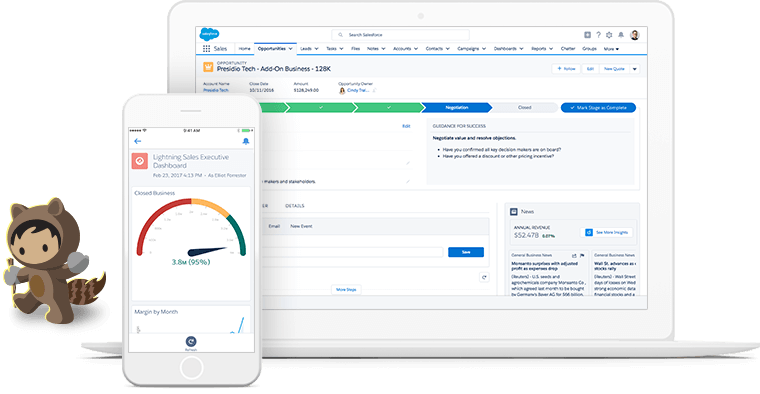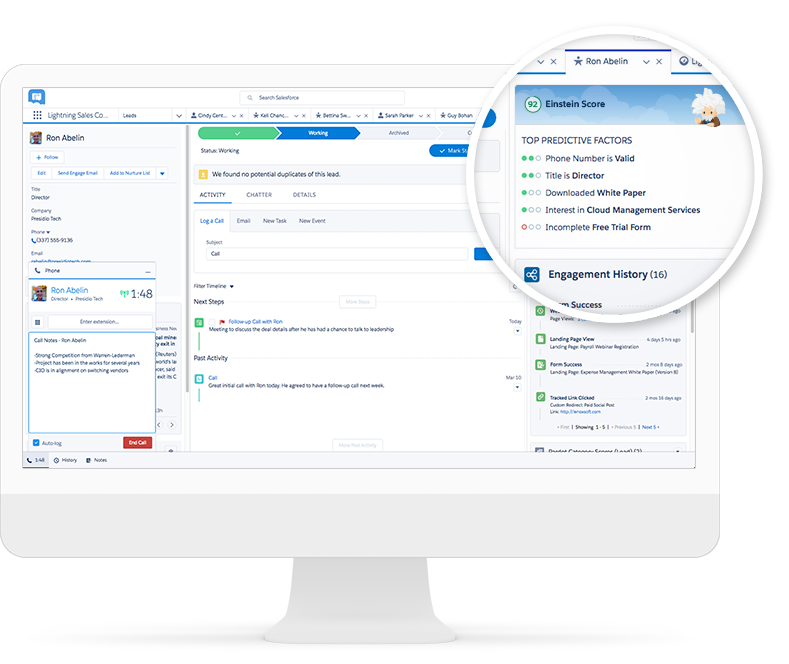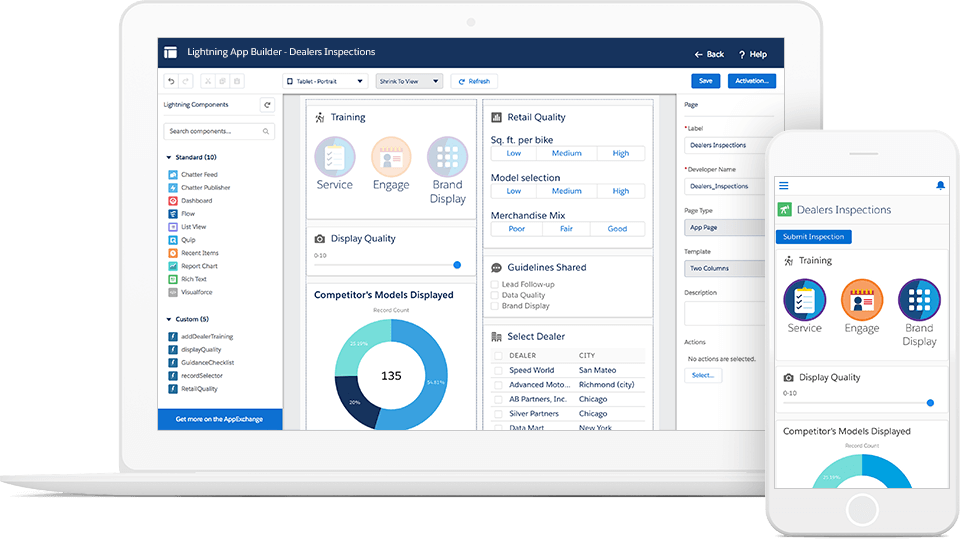Unlocking the Power of Salesforce Lightning: A Comprehensive Guide
In today’s incredibly fast-paced business environment, organisations are constantly seeking innovative ways to enhance productivity and streamline their operations. Salesforce, the leading customer relationship management (CRM) platform, offers an array of powerful tools and features to help businesses achieve these goals. One such tool is Salesforce Lightning, a dynamic user interface that revolutionises the CRM experience.
In this comprehensive guide, we will explore the features, benefits, and best practices for unlocking the power of Salesforce Lightning.
What is Salesforce Lightning?
Salesforce Lightning is the modern user interface (UI) and user experience (UX) framework of the Salesforce CRM platform. It was introduced as a significant update to the classic Salesforce interface to provide a more intuitive, efficient, and visually appealing user experience.
It offers a responsive design, optimised for desktop and mobile devices, enabling users to access their CRM data from anywhere at any time. With its visually appealing layout, Lightning offers enhanced navigation, improved collaboration, and increased productivity.
With Salesforce Lightning, users can access their CRM data and perform tasks more seamlessly, whether they are using a desktop, tablet, or mobile device. The Lightning UI is designed to be responsive and adaptable, providing consistent functionality and layout across various screen sizes.

Key Features and Benefits:
Lightning Experience: The Lightning Experience provides users with a clean and intuitive interface, enabling them to work more efficiently. It includes customisable Home Pages, Kanban boards, and Activity Timeline, allowing users to prioritise their tasks and access relevant information with ease. It provides a more visually appealing and user-friendly experience compared to the classic interface.
Lightning allows users to personalise their home pages by arranging and organising components, such as charts, dashboards, and lists, according to their preferences and workflows. This flexibility enables users to have quick access to the most relevant information and tasks.
Lightning introduces Kanban views, which enable users to visualise and manage their records in a card-based board format. This view is particularly useful for tracking progress, managing leads or opportunities, and facilitating collaboration among team members.
The Activity Timeline in Lightning presents a consolidated view of an individual or an account’s activities, such as emails, calls, tasks, and events. It provides a chronological record of interactions and enables users to quickly access and manage their engagements with customers or prospects.
App Builder: Salesforce Lightning comes with an intuitive App Builder tool that allows users to create custom applications tailored to their unique business requirements. With drag-and-drop functionality, users can easily design and deploy applications without any coding knowledge.
Lightning Components: Lightning Components are reusable building blocks that can be combined to create powerful and customised functionality. These components can be easily added to pages, enhancing user experience and extending the CRM’s capabilities.
Enhanced Reporting and Analytics: Lightning provides advanced reporting and analytics capabilities, allowing users to gain valuable insights into their business performance. With features like customisable dashboards, report filters, and interactive charts, users can make data-driven decisions and track their key performance indicators (KPIs) effectively.
Integration with External Systems: Salesforce Lightning supports seamless integration with external systems and applications. It allows users to connect and interact with data from various sources, enabling a comprehensive view of customer information and facilitating efficient data management.

Work Smarter with Artificial Intelligence:
Salesforce Lightning incorporates artificial intelligence (AI) capabilities through a feature called Salesforce Einstein. Salesforce Einstein is a suite of AI technologies integrated into the Salesforce platform, including the Lightning Experience interface. It leverages AI to enhance various aspects of the CRM experience and provide intelligent insights and automation.
Here are some key AI-powered features within Salesforce Lightning:
Salesforce Einstein Analytics: Einstein Analytics uses AI and machine learning algorithms to analyse vast amounts of data and generate meaningful insights. It helps users discover patterns, identify trends, and make data-driven decisions within the Lightning interface.
Predictive Lead Scoring: Einstein Lead Scoring utilises AI algorithms to automatically evaluate and rank leads based on their likelihood to convert into sales opportunities. It analyses historical data, lead attributes, and customer interactions to provide sales teams with prioritised leads and recommendations.
Next Best Action: Einstein Next Best Action suggests personalised recommendations for sales representatives based on customer data and business rules. It assists sales teams in identifying the most effective actions to take at each stage of the customer journey, improving engagement and conversion rates.
Automated Email Responses: Einstein Reply Recommendations analyses the content of incoming emails and suggests suitable responses to users. It saves time for users by providing AI-generated response suggestions that can be easily customised and sent directly from within the Lightning interface.
AI-Powered Chatbots: Salesforce Lightning can be integrated with AI-powered chatbots to provide automated customer support and assistance. These chatbots use natural language processing and machine learning to understand and respond to customer queries, enhancing self-service capabilities and improving customer satisfaction.
Intelligent Case Classification: Einstein Case Classification helps streamline customer service operations by automatically categorising and routing support cases based on their content. It uses AI algorithms to analyse case descriptions and assign them to the appropriate agents or departments, optimising case management efficiency.
Voice Assistant Integration: Salesforce Lightning can be integrated with voice assistants like Amazon Alexa or Google Assistant. This integration enables users to perform voice commands and interact with Salesforce data through voice-enabled devices, providing a hands-free and convenient user experience.
These AI-powered capabilities within Salesforce Lightning enhance productivity, improve decision-making, and automate repetitive tasks, enabling users to focus on high-value activities. Salesforce continues to invest in AI innovation, and new AI features and enhancements are regularly introduced to further leverage the power of AI within the Lightning platform.

Best Practices for Implementing Salesforce Lightning:
Assess Your Current CRM Environment: Before transitioning to Salesforce Lightning, it is essential to evaluate your current CRM environment and identify any customisation or integration requirements. This assessment will help you plan and execute a smooth transition without disrupting your business operations.
Develop a Training Strategy: Salesforce Lightning introduces new features and a different user experience. It is crucial to invest in comprehensive training programs to familiarise your users with the Lightning interface and empower them to leverage its full potential. Providing ongoing training and support ensures user adoption and maximises the benefits of Salesforce Lightning.
Leverage Lightning AppExchange: Salesforce’s AppExchange is a marketplace of pre-built Lightning-ready applications and components. Explore the available apps and components that align with your business needs. Leveraging these solutions can save time and effort in custom development and help you quickly enhance your CRM capabilities.
Customise for Your Business Processes: Take advantage of Lightning App Builder and Lightning Components to create custom applications and functionality that align with your unique business processes. Tailor Salesforce Lightning to match your specific workflows, ensuring maximum efficiency and user satisfaction.
Optimise Mobile Experience: Salesforce Lightning is designed to provide a seamless experience across devices. Make sure to optimise your Lightning setup for mobile usage by leveraging responsive design, mobile-optimised components, and mobile-specific features. This empowers your sales team to access critical information on the go, improving productivity and customer interactions.

Salesforce Lightning is a game-changer in the CRM world, offering a wealth of features and benefits to boost productivity and drive business growth. By understanding the key features, implementing best practices, and customising Lightning to match your business processes, you can unlock its full potential.
Salesforce Lightning represents a significant shift in the Salesforce user experience, providing a more modern, flexible, and intuitive interface. It empowers users to be more productive, collaborate effectively, and leverage advanced features and customisation options to meet their specific business needs.
Embrace the power of Salesforce Lightning, and empower your organisation to work smarter, collaborate seamlessly, and deliver exceptional customer experiences. With its intuitive interface, customisable applications, and advanced reporting capabilities, Salesforce Lightning is poised to revolutionise your CRM experience.
Start exploring Salesforce Lightning today and unlock its power to propel your business to new heights of success.
If you want to learn more about Salesforce Integration or looking to transform your business, get in touch with us today for a free consultation. Enjoyed this article? Please share this blog on your LinkedIn.






